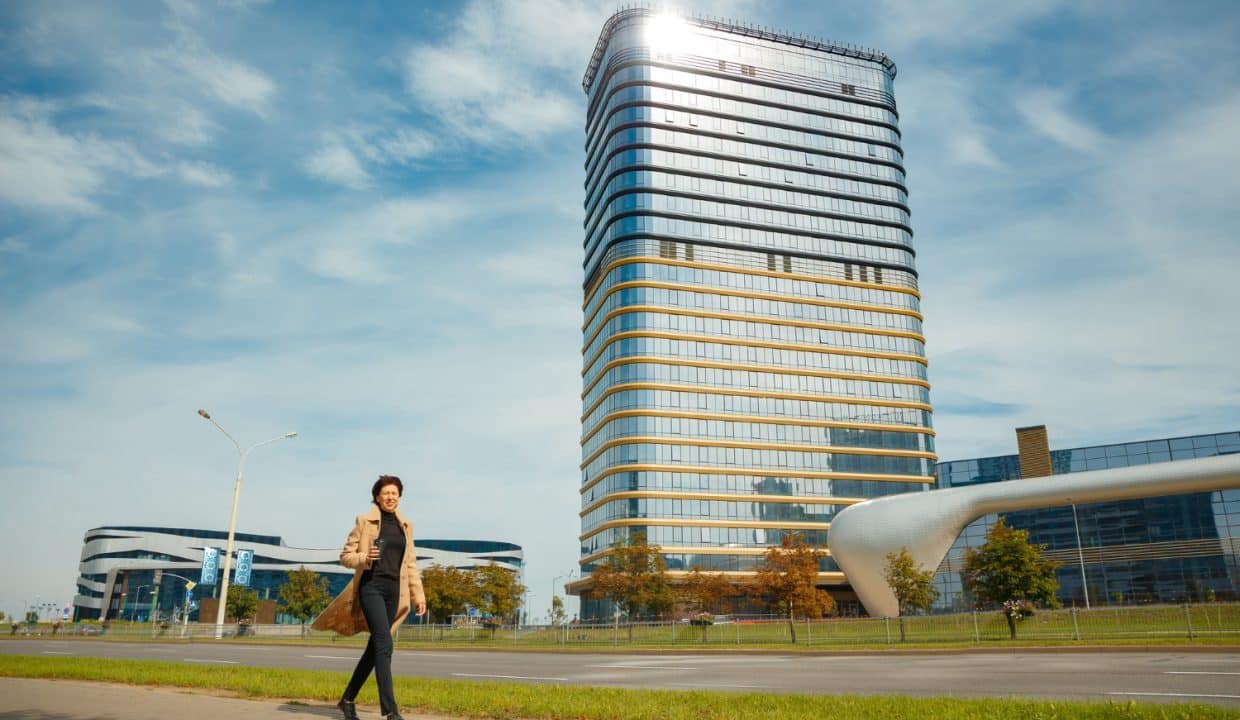In today’s competitive real estate market, apartment amenities have become a key differentiator for renters and buyers alike. What once was considered a luxury is now an expectation as modern apartment dwellers seek spaces that offer convenience, comfort, and lifestyle enhancements. But which amenities genuinely add value to your apartment experience—and, significantly, to the property’s market value? Here’s a breakdown of the top amenities that deliver tangible benefits. 1. High-Speed Internet and Smart Home Technology In a world increasingly dependent on connectivity, high-speed internet is not just a perk; it’s a necessity. Apartments equipped with fiber-optic internet or pre-installed Wi-Fi hubs cater directly to the needs of remote workers, students, and tech-savvy residents. Smart home technology, such as keyless entry, app-controlled thermostats, and intelligent lighting, also appeals to modern renters. These features provide convenience and save on energy costs, making them a win-win for both tenants and property owners. 2. On-Site Fitness Centers Gone are the days when a treadmill in a corner room counted as a gym. Today’s apartment fitness centers often rival standalone gyms, offering yoga studios, strength training equipment, and even on-demand fitness classes. For residents, having a state-of-the-art fitness facility steps away eliminates the cost and time of a gym membership. 3. Outdoor Spaces As urban areas become denser, outdoor amenities have skyrocketed in importance. Rooftop terraces, landscaped gardens, and communal BBQ areas provide residents a much-needed escape. Spaces like these promote relaxation, community interaction, and a sense of connection to nature—all of which are particularly valued in city living. 4. Co-Working Spaces With the rise of remote work, co-working spaces within apartment complexes have become a game-changer. These areas, equipped with high-speed internet, ergonomic furniture, and meeting rooms, cater to professionals who want a productive environment without the commute. They also enhance the building’s appeal to young professionals and digital nomads. 5. Premium Security Features Safety is a top priority for any renter or buyer. Apartments with 24/7 security, surveillance cameras, secure parking, and video intercom systems provide peace of mind. These amenities enhance resident satisfaction and make properties more attractive in competitive markets. 6. Pet-Friendly Facilities For pet owners, apartments with pet-friendly policies are essential. Amenities such as dog parks, pet washing stations, and walking trails cater to this demographic. As the number of pet-owning households grows, these features are becoming standard in high-demand properties. 7. Energy Efficiency and Sustainability Green living is no longer a trend—it’s a lifestyle. Apartments with energy-efficient appliances, solar panels, recycling programs, and water-saving fixtures appeal to eco-conscious renters and buyers. Sustainable features also help reduce utility costs, an added incentive for residents. 8. Parking Solutions For urban dwellers, parking is often a dealbreaker. Properties offering secure parking, electric vehicle charging stations, or bike storage facilities stand out in dense areas where parking is limited. 9. Community Events and Concierge Services Lifestyle-driven amenities, such as organized community events or concierge services, add a personal touch to apartment living. These experiences foster a sense of belonging, from wine tastings to yoga sessions. Concierge services, meanwhile, enhance convenience by handling everything from package deliveries to restaurant reservations. 10. Resort-Style Pools A pool isn’t just a place to cool off; it’s a lifestyle feature. Infinity pools, cabanas, and poolside bars elevate the property’s appeal, making it feel more like a luxury resort than an apartment complex. Why These Amenities Matter Apartment amenities do more than attract renters—they create a sense of home, convenience, and lifestyle that fosters long-term satisfaction. For property owners, these features increase occupancy rates and rental yields, ensuring a solid return on investment. Consider these amenities whether you’re searching for an apartment or looking to invest in real estate. They’re not just extras but essential for adding value to the apartment experience.
All Posts in "Hurghada" Tag
Tag archive page
When it comes to property investment, the adage “location, location, location” remains as relevant as ever, especially in 2025. While factors like property prices, amenities, and market trends are important, the location of a unit is the foundation upon which all other aspects are built. Here’s why location is the most critical element for unit investment in 2025 and how it can significantly influence your returns. 1. Economic Growth Drives Demand for Property Location directly correlates with an area’s economic vitality. In 2025, regions experiencing robust economic growth—such as those with new infrastructure projects, thriving industries, or a growing population—will see higher demand for property. These areas often provide stable rental yields and long-term appreciation. 2. Accessibility and Transportation Infrastructure Easy access to public transportation, highways, and airports can dramatically enhance a property’s desirability. In 2025, areas with improved infrastructure projects—such as high-speed rail connections or new metro lines—will likely see an uptick in property value. 3. Quality of Life Attracts High-Value Buyers and Renters In 2025, buyers and renters prioritize areas with a high quality of life. This includes access to schools, healthcare facilities, green spaces, and low crime rates. Locations that offer these amenities are highly sought after, driving up demand and prices. 4. Proximity to Employment Hubs Properties close to major employment centers are consistently in demand. In 2025, as hybrid work models evolve, locations that balance proximity to business districts with residential comfort will stand out. 5. Tourism and Lifestyle Appeal The location’s appeal to tourists is pivotal for those investing in vacation rentals or second homes. Coastal regions, mountain towns, and areas with year-round attractions are prime choices for property investment in 2025. 6. Future Development Potential A location’s potential for future growth can make it highly valuable. Areas with planned developments, such as new business districts, shopping centers, or entertainment hubs, will likely surge in property prices. 7. Market Stability in Established Locations While up-and-coming areas can offer high returns, established locations provide stability. Cities like New York, London, and Tokyo remain top choices for investors due to their strong economies, cultural significance, and global appeal. 8. Environmental and Climate Considerations In 2025, climate change awareness has made environmental factors an essential aspect of property investment. Locations less prone to natural disasters, with access to renewable energy and green infrastructure, are becoming beautiful. 9. Local Property Regulations and Taxes Location impacts the regulatory landscape, including property taxes, zoning laws, and rental regulations. Investors in 2025 must assess how these factors can influence their return on investment (ROI). 10. Location and Long-Term Investment Security Ultimately, the right location ensures long-term security for your investment. Areas with steady demand, sustainable growth, and strong local economies provide a solid foundation for property investments that retain or grow their value over time. How to Choose the Best Location in 2025 When evaluating a property’s location, consider: By thoroughly researching these factors, investors can make informed decisions and maximize their unit investment potential. Conclusion: Location Is the Key to Property Success In 2025, property investment success hinges on choosing the correct location. A well-chosen location ensures steady appreciation, enhances rental yields, and attracts high-value buyers or renters. Whether you’re a seasoned investor or a first-time buyer, always prioritize location when making unit decisions. Start exploring the top property markets today and secure your financial future in 2025!
Relocating abroad is an exciting venture, but choosing the right location to invest in property is a critical decision for expats. Whether you’re looking for a bustling urban lifestyle, serene coastal living, or lucrative investment opportunities, 2025 presents numerous global property markets ideal for expatriates. Here’s a dive into the best property destinations for expats in 2025. 1. Portugal: A Haven for Property Investment Thanks to its Golden Visa program and favorable tax benefits, Portugal continues to shine as a top choice for expats. Cities like Lisbon and Porto offer vibrant cultural experiences, while coastal towns like the Algarve promise idyllic retreats. The stable property market and attractive rental yields make Portugal a solid investment for 2025. 2. Dubai, UAE: Luxury Meets Opportunity Dubai is synonymous with opulence and opportunity, making it a magnet for expats. With zero income tax and a thriving property market, expats can enjoy quality living and investment returns. New developments in areas like Dubai Marina and Downtown Dubai are attracting attention with their world-class amenities. 3. Spain: Mediterranean Charm and Affordable Properties Spain remains a favorite among expats seeking a relaxed Mediterranean lifestyle. Cities like Barcelona and Madrid offer a mix of history, culture, and modernity, while regions like Costa del Sol are perfect for those seeking coastal bliss. Spain’sSpain’svely affordable property prices make it an appealing option for 2025. 4. Thailand: Affordable Tropical Living Thailand has long been a haven for expats, particularly retirees, due to its affordable cost of living and breathtaking landscapes. Cities like Bangkok provide urban excitement, while Phuket and Koh Samui islands are ideal for beachfront property investments. 5. Germany: A Stable Market for Professionals Germany’s economy and stable property market make it a top destination for expats seeking professional opportunities. Cities like Berlin, Munich, and Frankfurt boast excellent infrastructure and a growing demand for rental properties, providing great investment potential. 6. Mexico: Affordable Living Close to Home (for Americans) Mexico offers expats proximity to the U.S., affordable property options, and a vibrant culture. Hotspots like Mexico City, Playa del Carmen, and Puerto Vallarta are gaining popularity among expats for their mix of urban and coastal living options. 7. Australia: Urban Excellence and Scenic Retreats Australia continues to attract expats with its high standard of living, excellent healthcare, and property options ranging from city apartments to rural retreats. Sydney, Melbourne, and Brisbane remain top picks for professionals, while the Gold Coast is a paradise for beach lovers. 8. Turkey: A Rising Star for Property Investors Turkey offers a unique blend of cultural richness and lucrative property opportunities. Istanbul is a hotspot for expats, offering a vibrant lifestyle and a rapidly growing property market. Coastal areas like Antalya and Bodrum attract those seeking scenic beauty and affordable luxury. 9. Canada: A Family-Friendly Property Market Thanks to its excellent education system, safety, and welcoming communities, Canada consistently ranks high for expats, especially families. Cities like Toronto, Vancouver, and Calgary offer a mix of suburban charm and metropolitan amenities. 10. Greece: Affordable Beauty in the Mediterranean Greece has emerged as a promising property market for expats in 2025, with affordable homes and a residency-by-investment program. Athens is a bustling hub for business, while the Greek islands offer serene living for retirees and remote workers. Why These Property Markets Stand Out For expats, the best property markets in 2025 combine affordability, stability, and growth opportunities. Each destination offers unique benefits, including incentives, a strong rental market, and cultural richness. Investing in property abroad can be both a lifestyle choice and a profitable venture. As the global property market evolves, these destinations are set to offer expats an unmatched combination of living quality and investment returns. Are you ready to find your dream property in 2025? Start exploring these exciting markets today!
The commercial real estate sector is undergoing a paradigm shift driven by the rapid advancement of artificial intelligence (AI) and robotics. These technologies are reshaping how buildings are constructed and managed but fundamentally altering how spaces are designed to meet the evolving demands of businesses and tenants. This blog explores how AI and robotics redefine commercial real estate design, from conceptualization to day-to-day operations. AI in the Design Process: Smarter Spaces, Faster Solutions 1. Predictive Design and Data-Driven Insights AI-powered design tools enable architects and developers to predict tenants’ needs by analyzing vast amounts of data. These tools consider demographic trends, employee productivity patterns, and environmental conditions to propose layouts and features that optimize usability and efficiency. For instance, office spaces designed with AI often include configurations that foster collaboration, improve air quality, and reduce energy consumption. 2. Generative Design Generative design, an AI-driven process, allows architects to input design goals—such as maximizing natural light or minimizing construction costs—and generate thousands of design iterations in minutes. Developers can then select the most optimal blueprint, saving time and resources while ensuring a more intelligent use of space. 3. Sustainability Integration AI helps design buildings with sustainability in mind by modeling energy consumption, water usage, and carbon footprints during the planning phase. Developers can incorporate renewable energy systems, efficient HVAC layouts, and materials with a lower environmental impact, aligning commercial properties with ESG (environmental, social, and governance) standards. Robotics: Transforming the Construction Landscape 1. Automation in Construction Robotics is revolutionizing construction by introducing automated machinery for bricklaying, welding, and concrete pouring. These robots increase precision, reduce waste, and shorten project timelines, translating to significant cost savings for developers. Companies like Fastbrick Robotics and Built Robotics are pioneering this space, automating tasks that were once labor-intensive and error-prone. 2. Modular Construction Robotics is a crucial enabler of modular construction, where building components are prefabricated off-site in a controlled environment. These modules are then assembled on-site, speeding up construction and minimizing disruptions. This approach particularly appeals to large-scale commercial projects like warehouses, data centers, and retail spaces. 3. 3D Printing in Real Estate 3D printing technology, powered by robotics, is becoming increasingly popular for constructing commercial properties. It allows for creating complex structures with minimal material waste, making it a cost-effective and environmentally friendly alternative to traditional construction methods. AI-Driven Building Management: The Smart Commercial Space 1. Real-Time Space Optimization AI-powered sensors and software analyze how tenants use commercial spaces in real time, providing actionable insights to property managers. For example, AI can suggest reconfiguring underutilized areas into coworking spaces or lounges, ensuring that every square foot is optimized for tenant satisfaction. 2. Predictive Maintenance AI and robotics are transforming building maintenance by predicting equipment failures before they occur. AI algorithms analyze data from sensors embedded in HVAC systems, elevators, and other infrastructure to identify potential issues, allowing for proactive repairs. Robotics complements this by performing routine inspections, reducing downtime, and enhancing operational efficiency. 3. Energy Efficiency AI-powered building management systems dynamically adjust lighting, heating, and cooling based on occupancy and external weather conditions. By integrating with renewable energy sources, these systems lower utility costs and improve a building’s carbon footprint, making commercial spaces and buildings active to tenants and investors. The Tenant Experience: Personalization at Scale AI and robotics are not just about efficiency; they also enhance the tenant experience by personalizing interactions. For example: Challenges and Considerations Despite its benefits, the integration of AI and robotics into commercial real estate design comes with challenges: Looking Ahead AI and robotics are no longer futuristic concepts but integral to modern commercial real estate. By driving efficiency, sustainability, and personalization, these technologies are setting new benchmarks for design and operation. As adoption grows, we can expect commercial spaces to become more innovative, adaptable, and increasingly aligned with the needs of a rapidly evolving workforce and consumer base. For developers and investors, staying ahead of this technological curve is not just an option—it’s a necessity. The question is no longer whether to integrate AI and robotics but how effectively they can be leveraged to create the commercial spaces of tomorrow.




